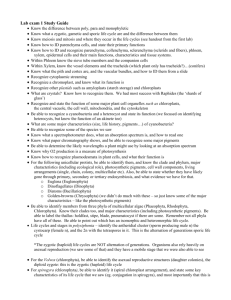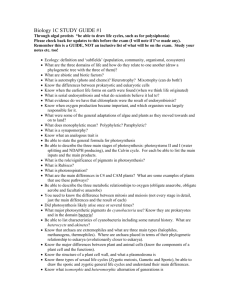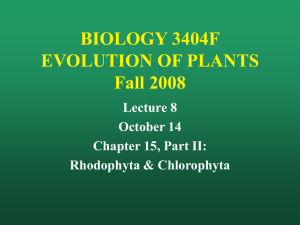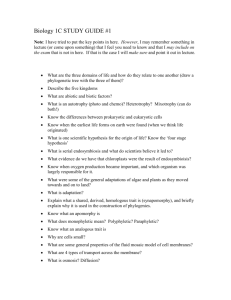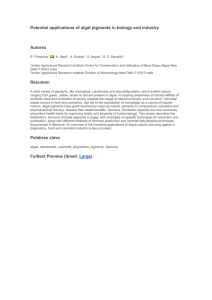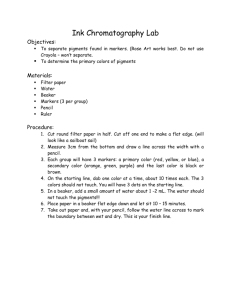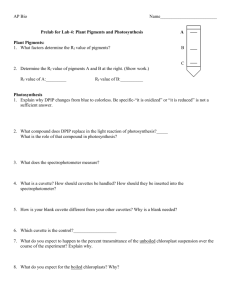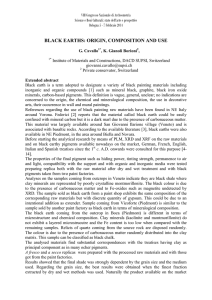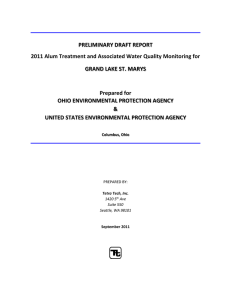Lab exam 1 Study Guide • Know the difference between poly, para
advertisement
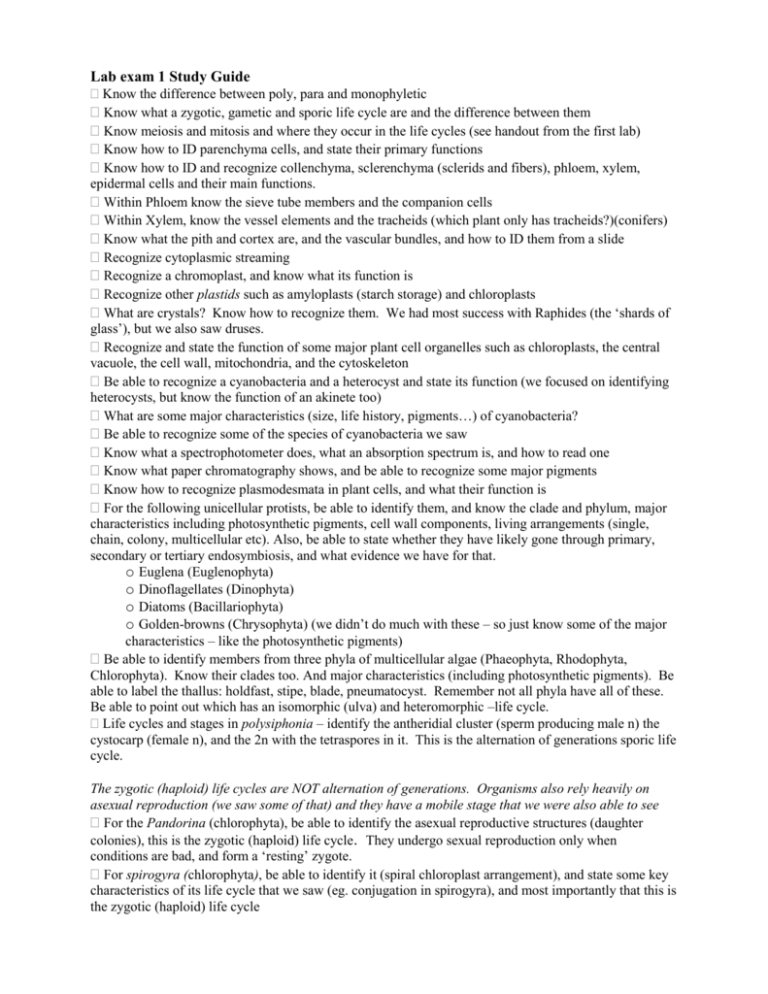
Lab exam 1 Study Guide Know the difference between poly, para and monophyletic Know what a zygotic, gametic and sporic life cycle are and the difference between them Know meiosis and mitosis and where they occur in the life cycles (see handout from the first lab) Know how to ID parenchyma cells, and state their primary functions Know how to ID and recognize collenchyma, sclerenchyma (sclerids and fibers), phloem, xylem, epidermal cells and their main functions. Within Phloem know the sieve tube members and the companion cells Within Xylem, know the vessel elements and the tracheids (which plant only has tracheids?)(conifers) Know what the pith and cortex are, and the vascular bundles, and how to ID them from a slide Recognize cytoplasmic streaming Recognize a chromoplast, and know what its function is Recognize other plastids such as amyloplasts (starch storage) and chloroplasts What are crystals? Know how to recognize them. We had most success with Raphides (the ‘shards of glass’), but we also saw druses. Recognize and state the function of some major plant cell organelles such as chloroplasts, the central vacuole, the cell wall, mitochondria, and the cytoskeleton Be able to recognize a cyanobacteria and a heterocyst and state its function (we focused on identifying heterocysts, but know the function of an akinete too) What are some major characteristics (size, life history, pigments…) of cyanobacteria? Be able to recognize some of the species of cyanobacteria we saw Know what a spectrophotometer does, what an absorption spectrum is, and how to read one Know what paper chromatography shows, and be able to recognize some major pigments Know how to recognize plasmodesmata in plant cells, and what their function is For the following unicellular protists, be able to identify them, and know the clade and phylum, major characteristics including photosynthetic pigments, cell wall components, living arrangements (single, chain, colony, multicellular etc). Also, be able to state whether they have likely gone through primary, secondary or tertiary endosymbiosis, and what evidence we have for that. o Euglena (Euglenophyta) o Dinoflagellates (Dinophyta) o Diatoms (Bacillariophyta) o Golden-browns (Chrysophyta) (we didn’t do much with these – so just know some of the major characteristics – like the photosynthetic pigments) Be able to identify members from three phyla of multicellular algae (Phaeophyta, Rhodophyta, Chlorophyta). Know their clades too. And major characteristics (including photosynthetic pigments). Be able to label the thallus: holdfast, stipe, blade, pneumatocyst. Remember not all phyla have all of these. Be able to point out which has an isomorphic (ulva) and heteromorphic –life cycle. Life cycles and stages in polysiphonia – identify the antheridial cluster (sperm producing male n) the cystocarp (female n), and the 2n with the tetraspores in it. This is the alternation of generations sporic life cycle. The zygotic (haploid) life cycles are NOT alternation of generations. Organisms also rely heavily on asexual reproduction (we saw some of that) and they have a mobile stage that we were also able to see For the Pandorina (chlorophyta), be able to identify the asexual reproductive structures (daughter colonies), this is the zygotic (haploid) life cycle. They undergo sexual reproduction only when conditions are bad, and form a ‘resting’ zygote. For spirogyra (chlorophyta), be able to identify it (spiral chloroplast arrangement), and state some key characteristics of its life cycle that we saw (eg. conjugation in spirogyra), and most importantly that this is the zygotic (haploid) life cycle For Chlorella (chlorophyta), be able to identify it and recognize that it is mostly an asexual reproducer.
